John Barnard is a race car designer and is credited with the introduction of three new designs into Formula 1: the carbon fibre composite chassis first seen in 1981 with McLaren, the semi-automatic gearbox which he introduced with Ferrari in 1989, and the "coke bottle" shape of the rear bodywork. He took his first steps in Formula 1 in 1969, when aerodynamic trial was just starting out and ailerons were first introduced. Before disengaging from racing he had the satisfaction of seeing one of his cars displayed in New York’s Museum of Modern Art, the “Ferrari 640”.
Same as Colin Chapman, Barnard managed to introduce new concepts and new materials in Formula 1, essential for opening up new winning cycles. He is probably the most talented designer Ferrari has ever had. The greatest, along with Colin Chapman, of Formula 1 history. His innovations were radical, having marked F1 for many years. Such a long-term vision couldn’t be understood and accepted by the teemed with politics Ferrari management at the time. The overpriced and pretentious Brit, far away from Italian mentality and for that too impeded from the beginning, stayed in Maranello very little, too little, even though Ferrari excellently replaced him, to mark an era, as his undisputed talent would have done presage, and the way he did instead with McLaren, that gave him free rein, due to the intuition of Ron Dennis who built his success on him.
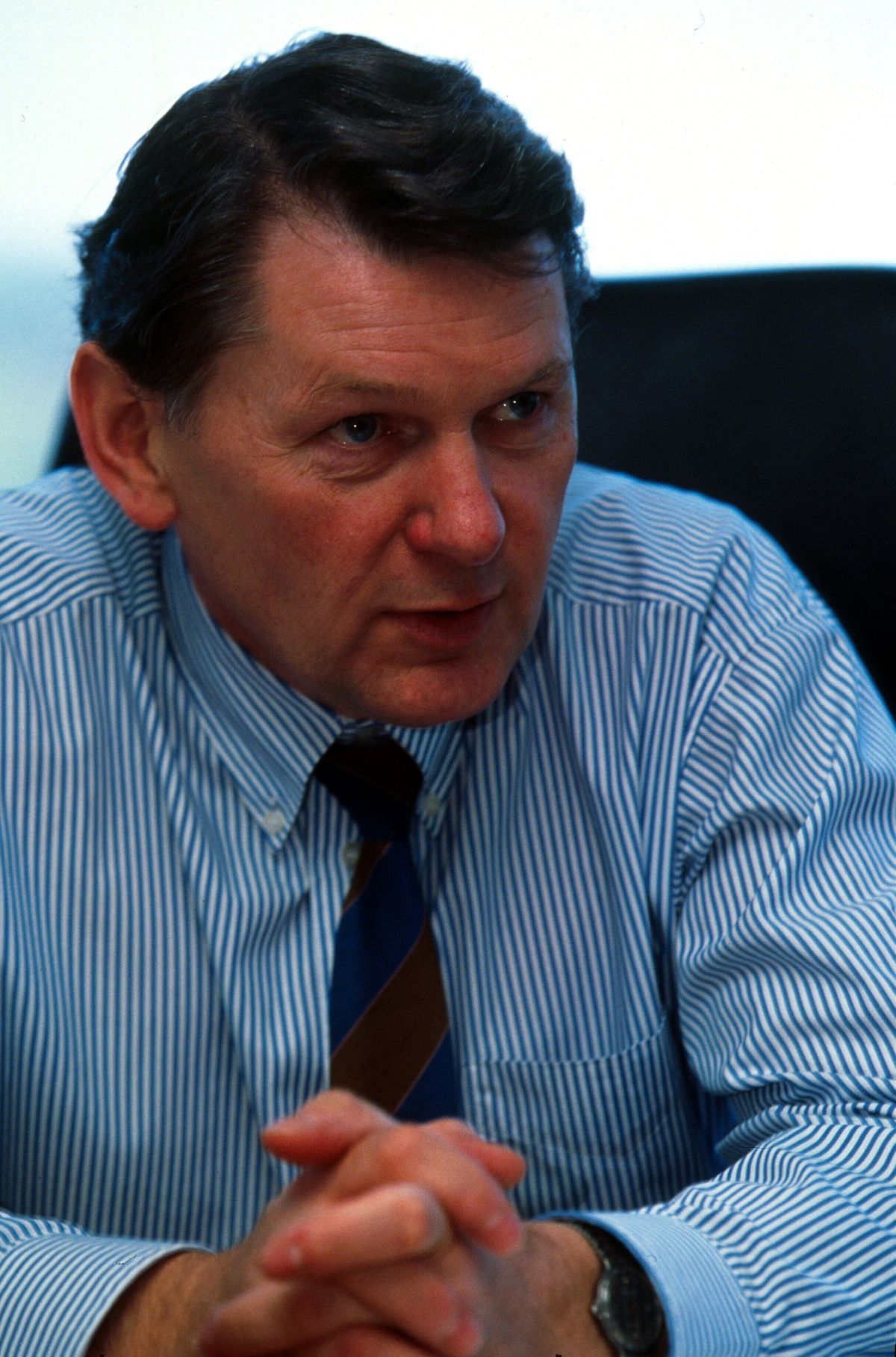
John Barnard, the great misunderstood, and Ferrari, a good kid in the wrong place. John Barnard “who committed two acts of sacrilege in one shot, moving the technological antenna of the Red to England and preventing mechanics to drink wine at lunch at GP”, Mauro Forghieri said.
John Barnard was born in Wembley, London on the 4th of May in 1946. The war was over and a whole new world loomed on the horizon. It was the period of transition between the piston-powered fighter planes and the intriguing jets that made their first appearance late in the war. Barnard gained a diploma from Watford College of Technology in the 1960s and, unlike many of his contemporaries, did not follow a lengthy academic career, instead choosing to join General Electric Company plc.
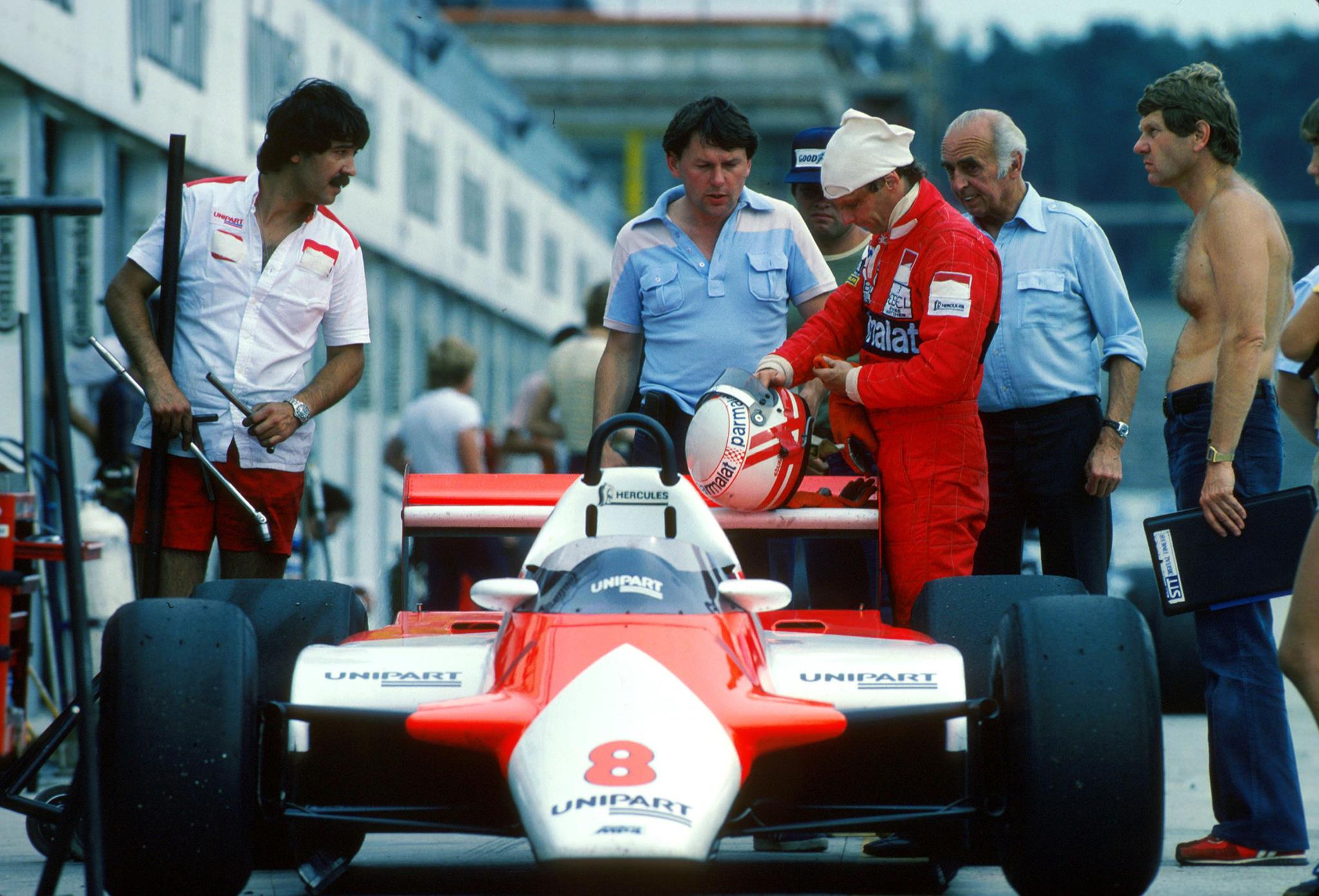
In 1968, Barnard was recruited by Lola Cars in Huntingdon as a junior designer and began working on many of the chassis manufacturer's projects, including Formula Vee racers and numerous sports cars. While at Lola, Barnard was introduced to Patrick Head, who later helped Frank Williams found the Williams Formula One team. The two engineers became good friends and Head was best man at Barnard's wedding in the early 1970s. The team would draw from the work in the wind tunnel.
Then there was the Cosworth engine. Unlike the four-cylinder models that had been employed in other designs, the V8 Cosworth was much stronger and more rigid. This meant the engine could actually serve as a stressed member of the chassis. This enabled Barnard and Head to rid the car of extra tubes and other support structures making the car quite a bit lighter. One of the other major differences in the T280 would come in the form of inwardly-mounted disc brakes. These inboard-mounted brakes would enable the new design to wear bigger shoes, and therefore, provide better handling. Integrated with a lightweight aluminium monocoque chassis and a fiberglass body the Lola T280 would be a competitive package that would earn victory in the 1000 Kilometers of Paris.
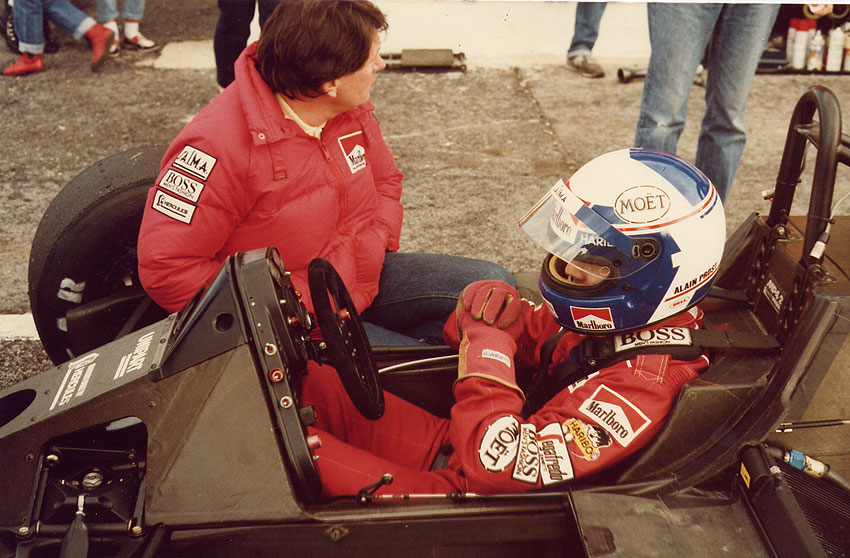
In 1972 Barnard joined the McLaren Formula One team and remained for three years working alongside Gordon Coppuck, the chief designer at that time, on the design of the Championship-winning M23 chassis and other McLaren projects, including the team's Indycar. Coppuck would design the M23, having become convinced of the advantages of the wedge design. The aluminium monocoque chassis would be wide and low and would blend seamlessly into the car's nose and sidepods, which not only housed the engine radiators but the oil coolers as well. Barnard would set to work toward the back of the design. Realizing the need to get rid of as much unnecessary components as possible, he would devise a single pillar support for the rear wing. The M23 would be the first such design with just a single pillar design and this helped to improve the efficiency of the car at the rear. In addition to the work around the rear wing, Barnard would also be instrumental in the use of foam injected sidepod designs to further help reduce weight. This, and some other minor tweaking by Barnard would all come into play on the M23.
By 1975 Barnard had been hired by Parnelli Jones to work with Maurice Philippe designing the team's Formula One racer (the Parnelli VPJ4) which campaigned from 1974 to 1976. The cars best finish was 4th by Mario Andretti at the 1975 Swedish Grand Prix. After Philippe left Vel's Parnelli Jones Racing, Barnard modified the design for the Indycar circuit. Further Indycar designs followed and in 1980 the Barnard-designed Chaparral 2K chassis took Johnny Rutherford to the prestigious Indianapolis 500 and the CART drivers title.
His success in the United States brought Barnard to the attention of new McLaren team principal Ron Dennis, who had his eye on a Formula One effort but needed a designer that could make his efforts successful. In 1980 Barnard joined McLaren, Dennis put him in charge of the design department and the engineer provided his boss with a revolutionary chassis in his very first try. John began working on the McLaren MP4/1, the first Carbon-Fibre-Composite (CFC) chassis in Formula One, alongside the Lotus 88 designed by Colin Chapman. The composite material had been used in Formula One for years, but for just small components. The MP4/1 would have its entire chassis made out of the material making it very light and very rigid.
The chassis itself was built by one of the team's sponsors Hercules Aerospace in the US, after former Hercules apprentice and then McLaren engineer Steve Nichols had advised Barnard, who along with Dennis, had been unsuccessfully searching in England for a company willing to take on the job, that the US based company might be their best choice, and quickly revolutionised car design in Formula One with new levels of rigidity and driver protection. The car would set the benchmark for Formula One design from that day on.
Having spent those years chasing glory at Indy, Barnard had been free to come up with radical designs. He was not stuck in the Formula One paradigm but understood very well the benefits of ground effects. The problem was that conventional materials limited the area available to produce the important aerodynamic effect. The only option left to him was to build the car of a different material. This way, the chassis would be no bigger than the 'driver's bum' and more area would be opened up to produce the ground effect. Barnard would take many other cues from the Chaparral 2K in the designing and building of the MP4/1. Dennis would heavily support Barnard's efforts telling him, 'You tell me what you want to do technically and I'll get the money'. This kind of in-house support would lead to Barnard working with several specialty companies that had much more to do in aerospace than in motorsports.
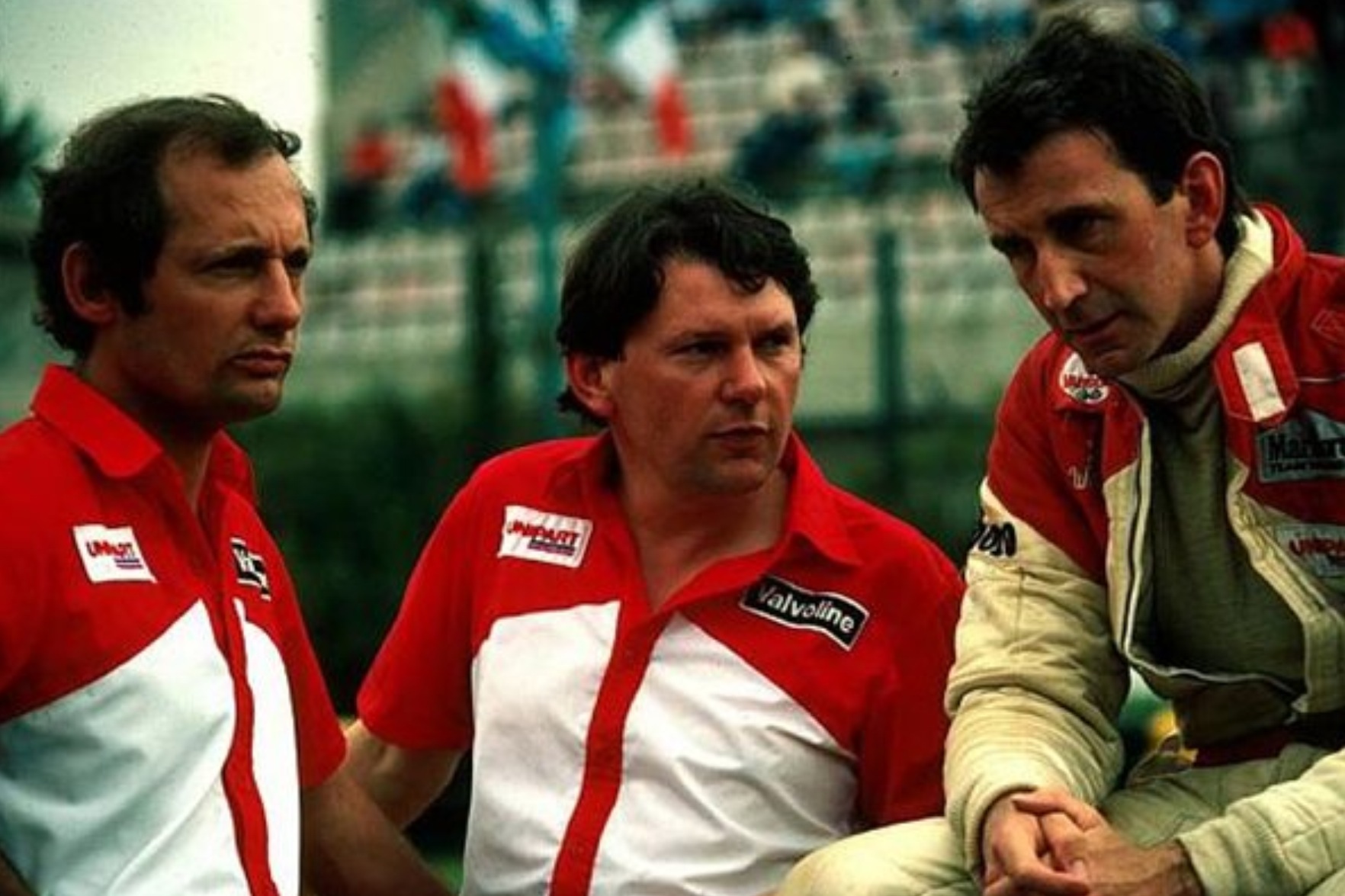
At the 1981 Italian Grand Prix at Monza, the strength of the MP4/1 was given a very public test when John Watson suffered a massive crash in his MP4/1 coming out of the second Lesmo turn. Many feared the worst for the Irishman as crashes like that in Formula One often led to the death of the driver. However, the strength of the Carbon Fibre monocoque (which many in F1 had been sceptical of) saw Watson survive unhurt. Within months the design had been copied by many of McLaren's rivals. The results of the efforts would pay huge dividends as the car would earn three successive podiums, including a victory in the British Grand Prix, in its very first year of competition. These results were very much the result of innovations included by Barnard in his design. There was the use of composites and the use of wind tunnels.
However, in 1983, the wind tunnel also helped Barnard to make use of another innovative design feature that remains a standard in the Formula One to this very day—'coke-bottle' styling of sidepods. The design of the rear of the car, Barnard would find, was just as important as the front. By wrapping the rear end much more tightly air could flow out the back of the car over the rear diffuser, thereby increasing the downforce of the car as a result of the low pressure created. This made Barnard's design aerodynamically efficient and would enable McLaren to just get stronger and stronger. And, over the course of the 1982 season Niki Lauda and John Watson would both win two races over the course of the season and would secure 2nd place in the Constructors' Championship for McLaren.
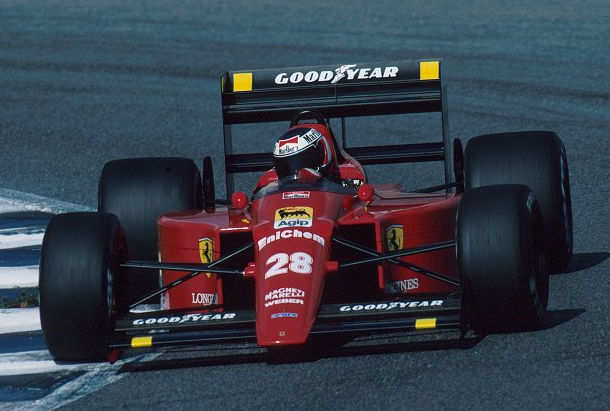
The combination of McLaren and Barnard were just getting warmed-up. Various iterations of the MP4/1 would transpire before Barnard revealed his next successor within the McLaren Project 4 family. The next in the family line would be, simply enough, the MP4/2, and this car would serve as the starting point of run of dominance that would see McLaren become the team of the 1980s.
Turbo-powered cars had now come into full effect in Formula One. Ron Dennis had used all of his skills to convince Porsche to develop a 1.5-liter turbocharged engine for Barnard's designs. The problem was that he didn't have the money. Mansour Ojjeh would foot the bill to get the engines, but Barnard would have requests of his own. This included the need for an engine that was as narrow as possible to maintain the ground effects. But then, just when Porsche set to work building such an engine, ground effects would be banned and Barnard would need to rework his design. This meant the Porsche engine would be used in the evolved MP4/1.
Barnard would have an advantage. The TAG/Porsche engine would produce an incredible amount of power. This would enable Barnard to produce the MP4/2 with rather overweight sidepods that helped to hide all of the components of the engine and maintain all-important cooling. Additionally, the increase in power meant John could incorporate a number of different wing elements, such as the 'barn-door' wings that helped to generate much of the downforce lost from the banning of the ground effects. In race trim, the Barnard design MP4/2, with its efficient TAG engine, was quite fast and this translated into seven victories for Alain Prost and five for Niki Lauda. Lauda would win the Drivers' Championship by a half a point over his teammate Prost and this meant McLaren absolutely dominated the Constructors' Championship.
Twelve of sixteen races would be won by McLaren over the course of the 1984 season and this would be just the beginning of a period in which McLaren and victory were almost always synonymous. The MP4/2B would continue the success for McLaren and Barnard. The car, in the hands of Alain Prost, would go on to win the Drivers' and the Constructors' Championships. Barnard had laid the foundations with the MP4/2. McLaren's run of dominance was underway. Before John departed McLaren his cars would earn 31 victories and would give the team back-to-back championships in 1984 and 1985, and then a runner-up result in 1986. Barnard would leave McLaren for Ferrari at the end of 1986.
Being the designer of the 1980s, Barnard would be able to name his terms. This, he would feel, would be important as he knew the Italian press was particularly demanding. Therefore, in an effort to clear the air around him to enable his creative efforts, Barnard would talk Ferrari into building a design office in Guildford, England. The Ferrari Guildford Technical Office would be unlike anything Ferrari had ever done in the past.
The first car Barnard would find himself involved with at Ferrari would be the F1/87 and the updated F1/88C. Though he would have a lot of input on elements of the design, the actual groundwork of the car's design would actually be laid by Gustav Brunner before Barnard arrived to work with the team. Construction of the car had already begun, and though the direction of the design was not what Barnard would have taken, he was forced, due to time and financial constraints, to do his best to make it work.
John had introduced a technical revolution in the early '80s when he designed and built a chassis made entirely of composites. It was now the end of the 1980s, and he was about to introduce another revolution. Barnard wouldn't just focus on the design of the '89 Ferrari. Technical innovations and the inner-workings of systems are considered of equal importance to John. In 1989 Barnard would design what would become known as the F1-89 with a Kevlar and carbon-fiber monocoque chassis.
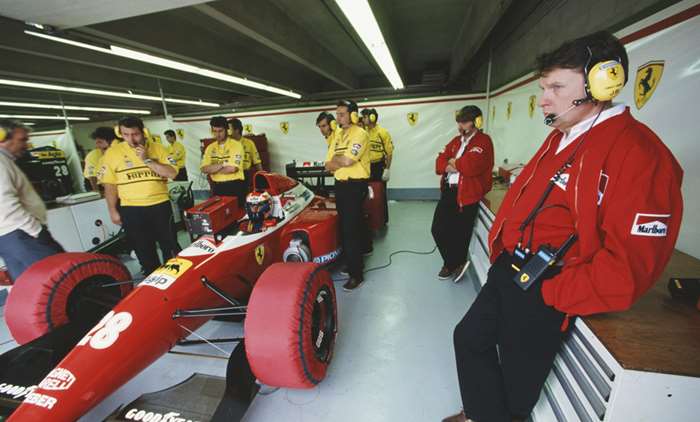
Barnard pioneered the electronic gear shift mechanism – now known as a semi-automatic gearbox – which was operated via two paddles on the steering wheel. This revolutionary system had proved fragile in testing since early in 1988 and many in F1 were expecting it to fail. Murray Walker, in one of his famous jokes, will say that “Ferrari in the pit stops changed 5 wheels, 4 tires and the steering wheel”. However, new team recruit Nigel Mansell took the new V12 powered Ferrari 640 to victory first time out at the Brazilian Grand Prix in Rio de Janeiro.
Barnard had instigated his second technical revolution, and by 1995 every team was running a copy of the Ferrari gearbox. One such advantage of the new system was put to good use by Gerhard Berger after he suffered a fiery crash at the high speed crash at the San Marino Grand Prix. The car had hit the wall at the Tamburello curve at close to 180 mph (290 km/h) and with an almost full fuel load had burst into flames, leaving the Austrian (who was knocked unconscious) with burns on his hands. His injuries kept him out of the next race in Monaco, and would normally have kept him out for longer, but due to being able to make gear changes without his hands leaving the steering wheel he was able to return in Mexico, just two races after his crash.
Berger and team boss Cesare Fiorio told the press in Mexico that had the Ferrari not been equipped with Barnard's revolutionary gearbox, Berger's injuries would not have allowed him to return to racing so soon. While at Ferrari, Barnard ruffled a few feathers with his way of doing things. Despite being the team's Technical Director, he alienated himself from the team when he decided to set up his office in England and not at the factory in Maranello as had been the tradition even with non-Italian members of the team, reasoning that it would allow more work to be done on designing the 1989 car without the distractions of the factory and the Italian press who had been known to be scathing on any Ferrari failures. He also put a ban on the team's long-standing tradition of having wine at the mechanic’s lunch table during testing, something that proved unpopular with the team's mostly Italian mechanics. Differences with Ferrari's management and the desire of Barnard to seek new pastures meant he would leave the team at the end of the '89 season, seeking a new challenge, and relishing working again for a team based in England.
John would join Benetton in 1990 and there would be very little time to come up with an all-new design. The team already had its B189. Therefore, with the help of Rory Byrne, Barnard would make do with he had and would evolve the design to create what would become known as the B190. Before the season would be over, the B190 would secure a couple of surprise victories. Having established the Benetton Advanced Research Group, Barnard would produce the B191 with its high nose, cleaner lines and much more tightly wrapped sidepods and rear end.
Though the new car would not make an impressive debut, Barnard's latest design would certainly leave an impression when, in the hands of Nelson Piquet, the new car came through victorious in the Canadian Grand Prix, just the fifth race of the season. Another podium finish in the Belgian Grand Prix would be about the only other highlight of the season, but, the car would serve as a basis of what was to come for Benetton, which included two World Championships for Michael Schumacher in 1994 and 1995. Sadly, a dispute over money would ruin the relationship between Barnard and Benetton and John would end up leaving the team not long after his B191 achieved that first victory in Canada.
Again, Barnard would be without something to do. He would tinker here and there until, once again, a former employer would be ready and willing to call him back into their ranks. John had joined Ferrari in the late 1980s and had started out by building a design office that would become known as Ferrari Design and Development, where he would be back to work for Ferrari later. This marked the second time in his career that Barnard had re-joined a team he had once worked for.
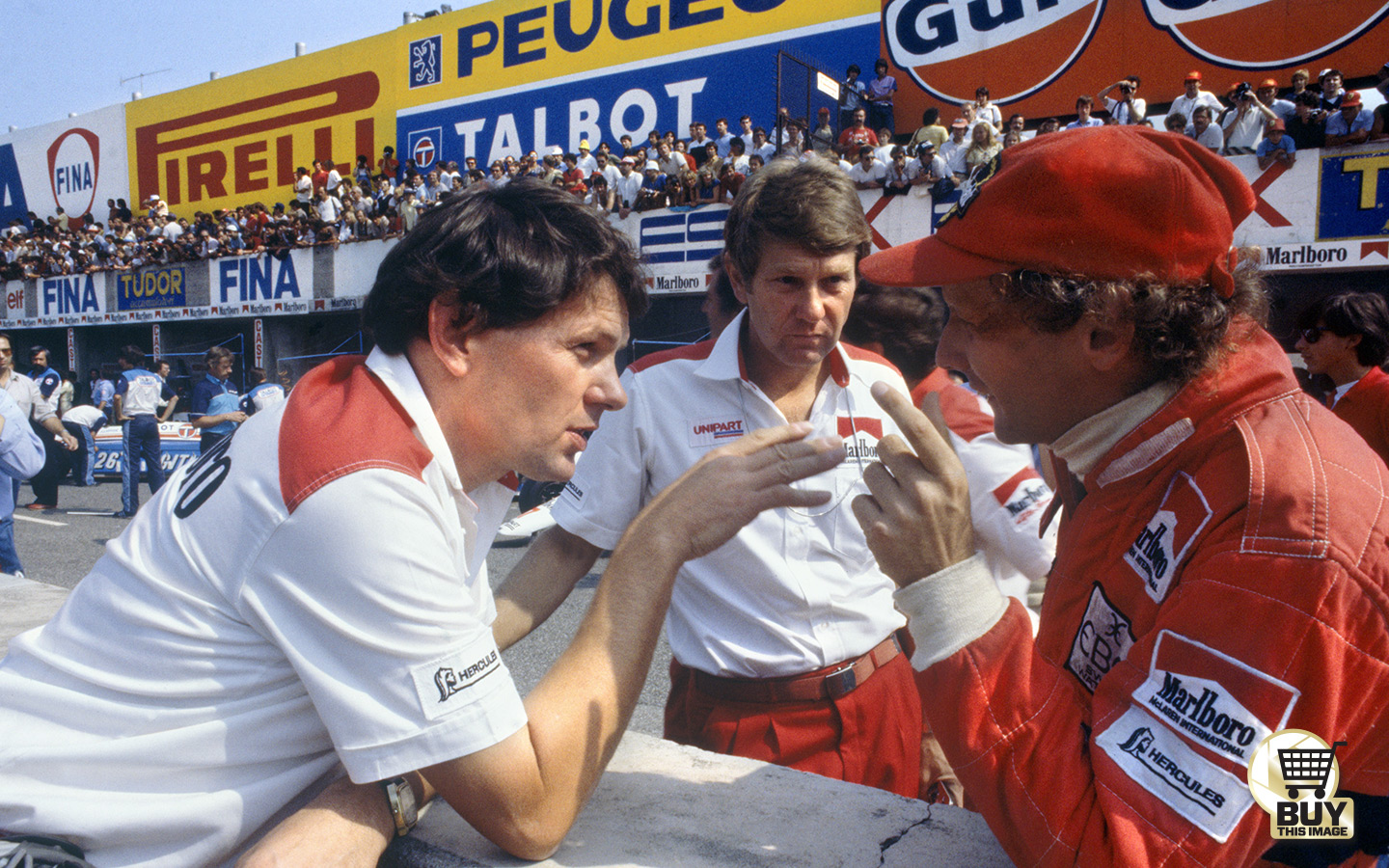
Not surprisingly, John's first efforts would be to bring Ferrari's technical efforts up to the latest standards and this would include making use of a wind tunnel facility in Bristol and further refining FDD. Joining Ferrari early in 1993, John would turn his efforts toward the 1994 season and the 645 project. The design of the previous year featured a slightly-raised, pointed nose with a much more rounded, bullet-like shape to the nose and the rest of the car. Barnard would come to the team and would tweak the design here and there but it was a distant runner compared to the Williams driven by Alain Prost and Damon Hill.
Looking toward to 1994, Barnard would try and simplify the car's design. John would keep the raised, bullet-like, nose and would further refine the splitter underneath the driver's legs. The first edition of the car would feature teardrop-shaped inlets that would be created to help shorten the sidepods and to make the sides of the car much more compact. However, the car would be quickly refined and rather conventional sidepods would be developed sporting the radiator inlets further to the outside replacing the teardrop-shaped inlets that had been initially used. Believing in simple, elegant lines as being the best indicator of a rightly-designed car, Barnard would make sure the lines of the new 412T2 would be exactly that. A low-slung nose, tall sidepods and the familiar coke-bottle sides and rear seemed something of a throw-back compared to the direction Benetton and other teams were going. This simplicity would not only prove to be quick straight-away, it would also be a very straight-forward car for drivers Jean Alesi and Gerhard Berger to set up.
Widely considered the most beautiful car in the paddock, the 412T2 would also prove competitive. Getting back to basics to a degree, Barnard would design sidepods that would be as short as possible but that would have squared-off inlets to help aid in cooling. All told, the 412T2 would be a considerable leap ahead from the previous year's car and would earn Jean Alesi his one and only victory in Formula One. Achieving more than 70 points over the course of the season, Ferrari recover to finish in 3rd place in the Constructors' Championship.
Heading into the 1996 season, Jean Todt would manage a small coup by signing none other than Michael Schumacher. Schumacher and Todt had come to the team with the thought being to restore the Scuderia to its former glory. Testing the 412T2 for the first time, Schumacher would declare his defence of the World Championship in 1995 would have 'been a lot easier'. Therefore, it was clear Barnard had not lost his touch when it came to designing suitable F1 cars.
Unfortunately, being based out of England, Barnard was out of touch with Ferrari's new mind-set of family. There had already been some strains between the team and himself as a result of the distance between the two entities geographically. It was clear that Barnard's days with Ferrari were coming to an end once again.
However, before he would depart the team he would pen his final design for the Maranello outfit. The F310 would see a switch to a 3-liter 10-cylinder engine. Looking to take advantage of the smaller and lighter engine, John would design another innovative car. The nose would undergo some changes over the course of the season including a very slightly raised design to improve airflow to the underside of the nose and the splitter. Then there was another that would have a dramatically raised, rather bulbous, nose supported by twin pillars. A good deal of effort would go into the design of the sidepods of the car. In an effort to increase airflow underneath and to the rear of the car that radiator inlets would be designed in a fashion similar to intake ducts used on fight aircraft and positioned well out to the sides. The area in between would have curvature similar to an airplane wing thereby splitting the airflow to the underside of the car and the rear wing at the back. Despite all of the key elements in place, the F310 would underperform somewhat, though there would be some moments in which the Ferrari showed surprising pace against much stronger competitors.
The pressure to join the team in Maranello was now too great for Barnard to ignore. He had to make a choice. He was hard a work designing what would become the F310B for the 1997 season when he made the choice to leave the team. John would appoint a couple of talented designers and engineers to take his place. Ross Brawn and Rory Byrne would oversee the final stages of the construction of the 310B.
It would end up being the design much credit must be given for helping to restore Ferrari to the top of Formula One. Sporting a highly-raised, pointed nose, beautifully-sculpted sidepods and a neatly wrapped rear end, the F310B would have to be considered the ultimate collaboration of all of Barnard's innovative designs and theories. Were it not for that unfortunate coming together with Jacques Villeneuve in Jerez at the end of the season, the car would nearly carry Michael Schumacher to his third World Championship. The car would rekindle, in just one season, Ferrari's hopes for the future. And, in many respects, Rory Byrne and Ross Brawn would build upon the concept of the 310B and would design the F2000, which would give the team its first Drivers' World Championship in more than 25 years. Leaving Ferrari, Barnard would negotiate with Ferrari and would end up purchasing FDD from them.
John would then establish his own effort known as B3 Technologies. This would lead to a deal with Tom Walkinshaw's Arrows team for 1998. This deal would quickly turn bad when Walkinshaw learned Barnard's company was also doing subcontract work for Alain Prost's own team at the same time. As a result, the deal with Arrows would be finished.
However, Barnard's B3 Technologies would continue to do work for the Prost team. Barnard himself would serve as a technical consultant for the team in 1999.
Following the 2001 season, Prost Grand Prix would close its doors and Barnard would find himself out of Formula One yet again. Never one to consider a different racing series out of his reach, Barnard would try to lend his expertise to the world of Moto GP becoming a technical director of Kenny Roberts' effort. This foray into the motorcycle world would be brief and John would leave the world of motor racing behind to pursue much more pastoral pursuits.
One of his criticisms of Formula One today is in the length of the regulations, and therefore, the lack of true creativity, and therefore, ugliness as a result of the pursuit for aerodynamic gains. It would make so much sense then Barnard would leave such a world of Formula One to design and build carbon-fiber furniture.
While many other designers would have many more championships and victories to their credit, there is absolutely no way the name of John Barnard can be excluded from any discussion of great Formula One designers. In so many ways John revolutionized the world of Formula One design making the whole endeavour as much an effort in aerospace as simple car design. Beyond that, there are some innovations that just won’t go away, and likely never will, when it comes to car construction and components. Therefore, there is just no way the name of John Barnard is ever going to go away from the discussion of Formula One's finest designers.
Videos
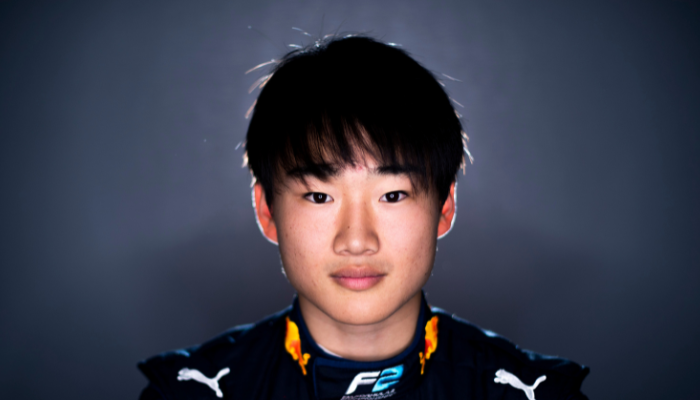
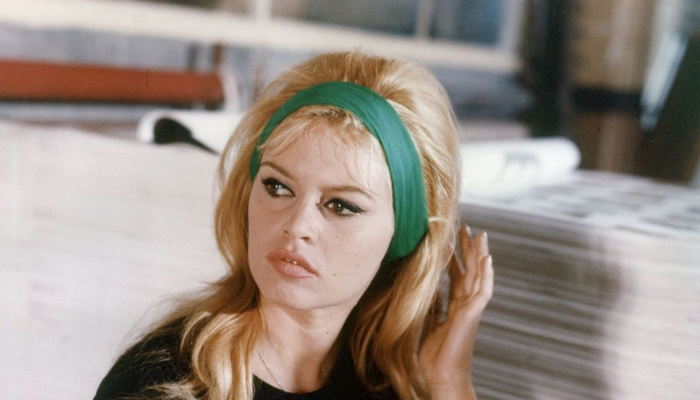
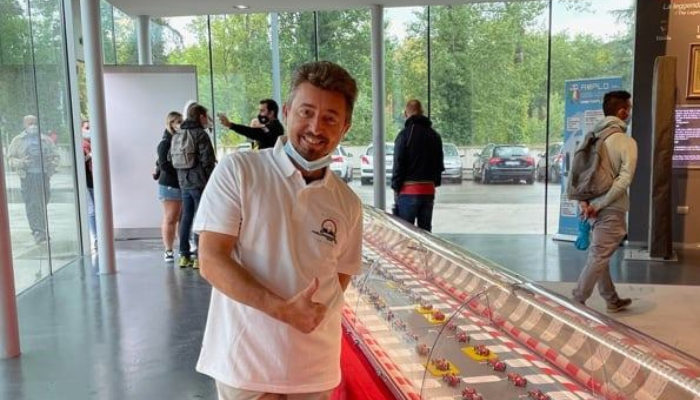
Comments
Authorize to comment